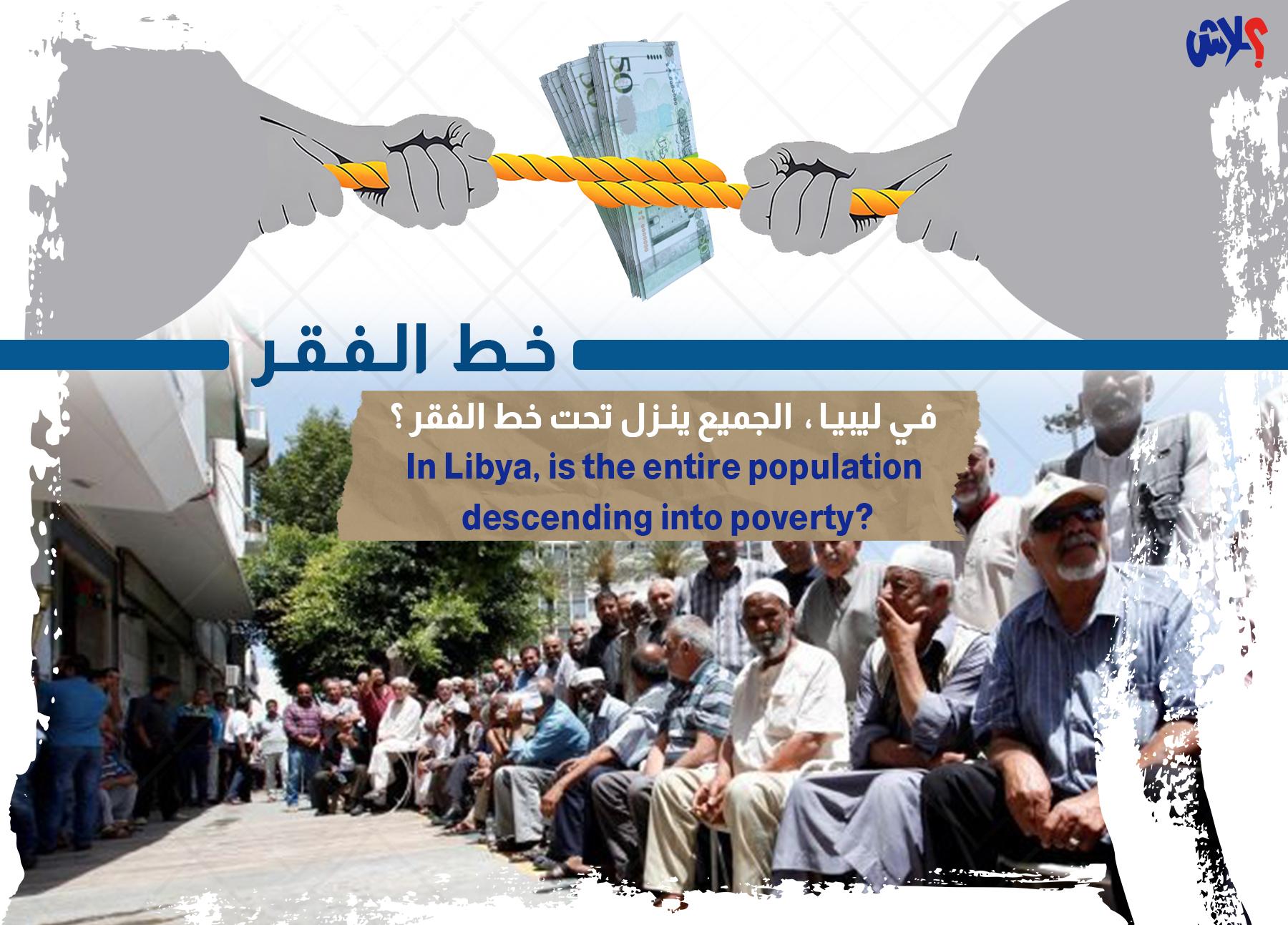In Libya, is the entire population descending into poverty?
One of the primary tasks of governments is typically to manage the country’s resources and finances, safeguard them from waste, defend the national currency, protect it from collapse, shield citizens from economic crises and disasters, and ensure diverse income sources that allow citizens to attain a minimum standard of living. In Libya, the opposite happens. The men in power and influential figures in the government do not suffer from economic crises; in fact, they benefit from them, working to perpetuate these crises for their own investment gains. Let’s examine what economic crises and political unrest do in Libya. The common factor among all crises, disasters, and wars is the rise in the dollar’s exchange rate in the parallel market. The Central Bank of Libya claims that it is forced to devalue the dinar or impose an additional tax on the sale of foreign currencies to maintain the country’s foreign currency reserves. With salaries remaining unchanged, the inevitable result of these adjustments is lowering the poverty line to include hundreds of thousands, possibly millions, of Libyans.
Given that the men in power, influential figures, those close to decision-making circles, ministers and their entourages, and members of legislative councils claim to care about the citizen, they travel on official missions where they receive thousands of dollars. The higher the dollar rate, the greater their gains. Meanwhile, as the dollar rate and prices increase, the citizen gets closer to the poverty line, if not already beneath it.
According to the World Bank's latest update on the international poverty line in September 2022, the current expenditure rate considered to be below the poverty line is $2.15 per person per day. This roughly translates to about 15 Libyan dinars per day, or 451 dinars per month per person. If we consider a Libyan family consisting of five members, this family would be considered poor if its monthly income is less than 2250 dinars.
Before the imposition of the new tax, the poverty line in Libya for the same family of five was 1600 dinars, based on the global poverty line standard. Between 1600 and 2250 dinars lie tens of thousands of Libyan families that lived at an acceptable level below the average. With a stroke of a pen by the wealthy Sadiq Al-Kabir, and with the approval of the wealthy Aguila Saleh, and to spite the wealthy Abdul Hamid Dbeibeh, the indicator moved up by more than 600 dinars, pushing these families below the poverty line and bringing thousands of other families from below average to near the inevitable poverty line. The impoverishment of these families to subdue and exclude Dbeibeh did not bear fruit, and another devaluation of the dinar and further lowering of the poverty line to include other Libyan families is expected, leaving no one but the poor in the country.
Amid the daily experience of rising prices for essential goods, government sources still insist that the official inflation rate is 1.4% annually, according to the Statistics and Census Authority. This rate was described by American researcher Steve Hanke, a lecturer at Johns Hopkins University, on his Twitter account as "fake," asserting that inflation rates in Libya are about 26 times the official rate, making the actual annual inflation rate 37%.
Considering this inflation rate, the actual poverty line in Libya significantly exceeds the discussed 2250 dinars. Recently, a group of economists at Misrata University studied this phenomenon and concluded that the realistic poverty line in Libya today for a family of five exceeds 2800 dinars, which is indeed alarming. A large number of Libyan families have only one source of income, the salary of the head of the family, which may not even reach half this value. So, what is the percentage of poor Libyan families today?
As Libyan families suffer from the consequences of decisions made by officials entrusted with their money, these officials have further entrenched poverty and disdain for the people. The Governor of the Central Bank of Libya claimed the existence of millions of counterfeit 50-dinar notes, ordering their withdrawal from circulation, which caused a severe liquidity crisis reminiscent of the liquidity crisis of 2016 and the following years. It was discovered, after the withdrawal of the currency began, that the Governor's claims were false, and there were no counterfeit notes. His actions were just another cheap maneuver to undermine the government and pressure his current adversary and former ally, Abdul Hamid Dbeibeh.
With the ongoing tug-of-war among the wealthy in power, the rope remains tightly wrapped around the neck of the ordinary citizen. Whenever one of the wealthy pulls the rope to pressure his rival, he crushes several poor people along the way, barely affecting his wealthy rival. The rival then responds with a pull that slightly shakes his position and crushes more poor people in the process. Thus, the sleeping poor remain fuel for the raging war among the wealthy, crushed by maneuvers and missing out on the spoils.

